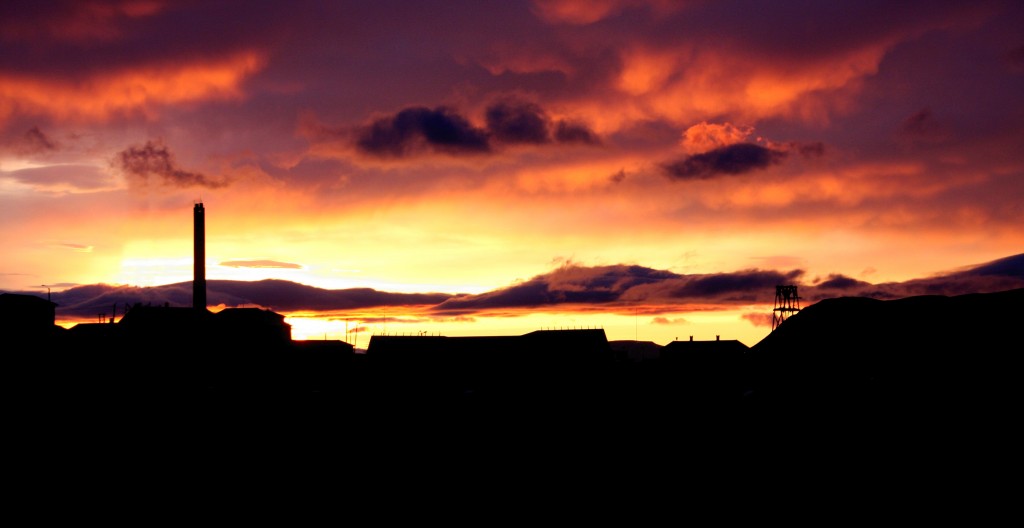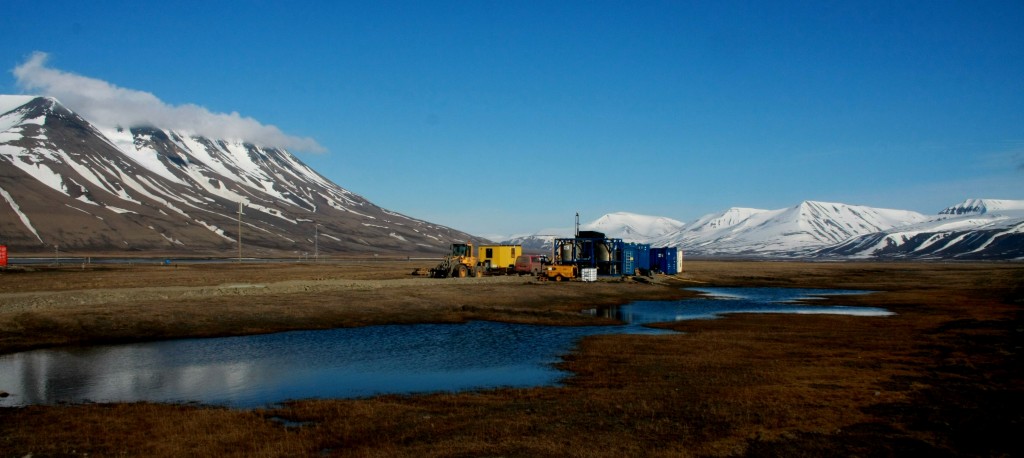In this month’s Geosciences column, Ingrid Anell introduces Norway’s Longyearbyen carbon capture and storage project and presents its first results.
The world’s northernmost community, Longyearbyen, located at latitude 78 degrees north, is making progress towards becoming the world’s first CO2 neutral community. Geologists at UNIS, the University Centre in Svalbard, have determined that just a few kilometres from Longyearbyen, in Adventdalen, there is a unique opportunity to study, evaluate, and even sequester and store, carbon dioxide in deep sandstone reservoirs. The vision is to create a green showcase, in which the Longyearbyen community handles its carbon dioxide from source to solution, from coal production and burning to sequestration in solid rock.
The Longyearbyen CO2 Project began in 2007, and the early results of the study from the four first drilled wells and several geophysical analyses have been recently accepted for publication in the Journal of Norwegian Geology. The UNIS research team has worked towards identifying a reservoir and seal, evaluating if the rock can be injected with fluid (the form carbon dioxide is in when injected), and working on understanding how fractures affect the amount of fluid injected and how it will then permeate throughout the rock.
Longyearbyen is a small community on Svalbard in the northern Barents Sea. A little over two thousand people call this isolated arctic environment home. Here, far north of the polar circle, the early effects of climate change are already visible. The far-reaching spread of untouched harsh and yet delicate wilderness creates incentive to preserve. Longyearbyen is unique with regards to energy as it is self-sufficient. The local powerplant burns locally harvested coal and provides the community’s energy needs. Based on the unique setting and conditions, the Project works towards developing, testing, and implementing carbon dioxide storage.
With the growing concerns of climate change in recent years, finding solutions to diminishing the human contribution to atmospheric CO2 has become a priority. As the human population continues to grow and further industrial development is likely, scientists are working on finding long-term storage for CO2. Carbon dioxide is recycled continuously through physical, chemical, and biological processes – stored not only in the atmosphere but in the sea, soil, and even possibly in stones. In stones, or more precisely in sandstone reservoirs in sedimentary basins, scientists have found a potential long-term, low-risk environment for CO2. The reservoir needs to be deep (over 800m preferably) and covered with a sealing rock unit to prevent leakage. There, the injected CO2 dissolves in pore-fluids and then, over hundreds to thousands of years, reacts with minerals, ultimately creating harmless carbonates.
The results of the pilot investigation of the Longyearbyen CO2 Project include studies of four logged drill-holes, new reflection seismic data, and various geological outcrop studies. The team has identified a deep upper Triassic sandstone reservoir beneath 480m of sealing shales of upper Jurassic or lower Cretaceous age located in Adventdalen. The rock successions are gently tilted so that while deeply buried in Adventdalen, they outcrop at the surface some 15-20km northeast of the injection site. The carbon dioxide is likely to migrate in this direction using fractures as pathways and partly using the reservoir rock matrix (the pore-spaces between individual grains).
In the summer of 2010 and 2011, the research team conducted injection tests using water. While early studies based on drill cores had suggested potentially low permeability, the tests revealed a much higher injectivity and the role of the fractures came into the limelight. The storability in the reservoir is still being researched. Questions related to the interaction between fractures and the rock porosity remain open, and are specific targets for future studies.
The local power-plant production is 60,000 tons CO2/year and researchers forecast that this amount can be injected into the rock and that the ensuing subsurface CO2 plume will be securely stored for 10,000 years. Any unanticipated leakage would face an additional top-seal, the permafrost of the High Arctic landscape.
The Longyearbyen CO2 Lab is one of several sequestration projects around the world, all ultimately driven by the same goal: finding a safe, permanent storage for CO2. In Longyearbyen, the CO2 group continues its research with new wells drilled during the summer of 2012 for further reservoir studies, regional scale geological investigations, and plans for injection tests of both water and, later, carbon dioxide. A major milestone of 2013 will be the project group’s recommendation to the Norwegian government on the feasibility for CO2 sequestration.
By Ingrid Anell, postdoc at UNIS


